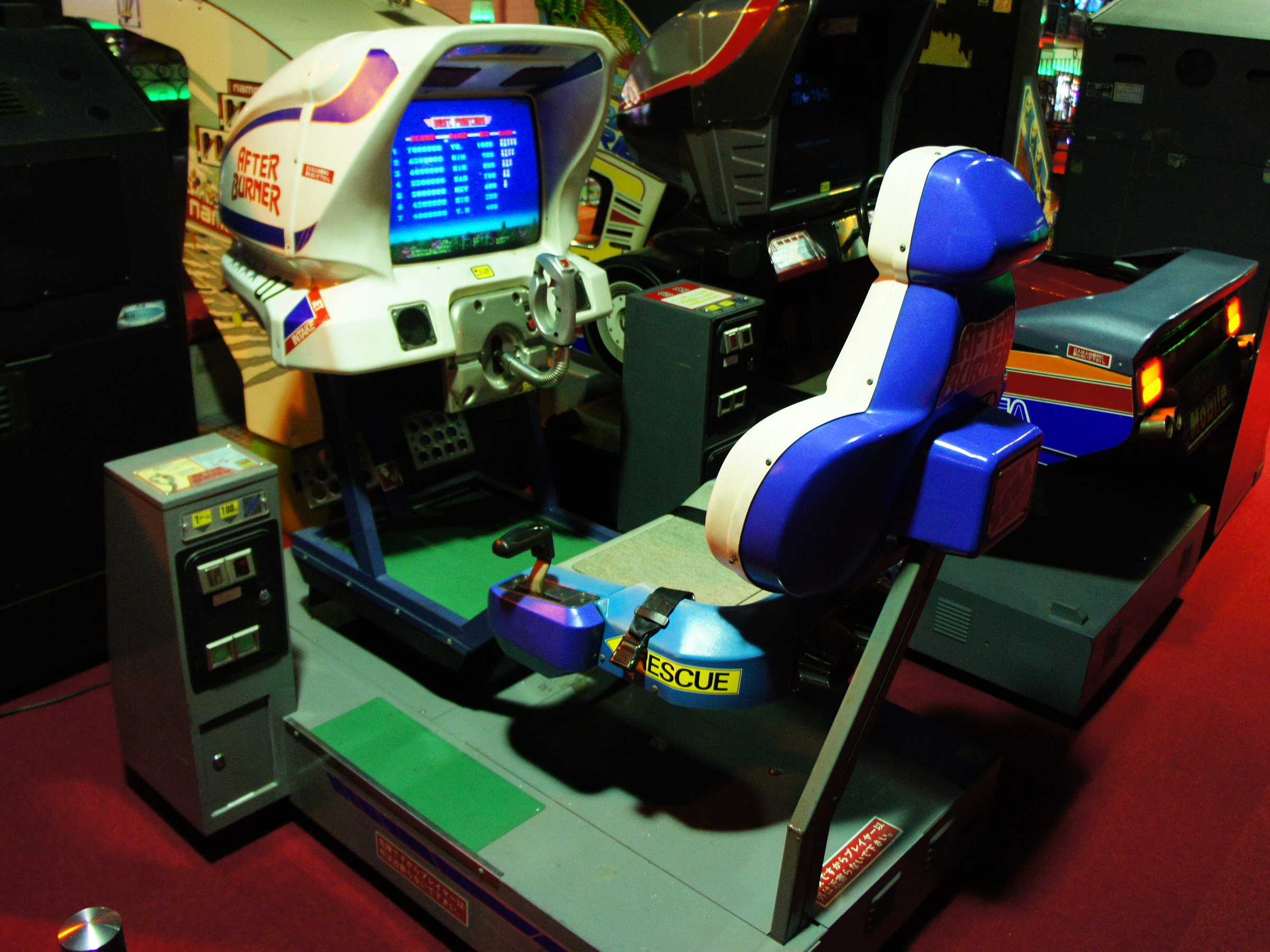|
Jeff Spangenberg
Jeffery Spangenberg is an American retired video game producer and entrepreneur who founded video game developers Punk Development, Iguana Entertainment, Retro Studios, and Topheavy Studios. Biography Spangenberg skipped college to learn computer programming, and later served as lead designer and president for Punk Development, the development team of publisher RazorSoft, headquartered in Sunnyvale, California. In 1991, Spangenberg founded his own company in Santa Clara, Iguana Entertainment, and hired 20 staff, including friends of his. Iguana, who would later move to Austin, Texas due to the elevated costs of living in Silicon Valley, wound up bought by Acclaim Entertainment in 1995, and Spangenberg was promoted to an executive position in which he overlooked all of Acclaim's software studios. Spangenberg was fired from Acclaim in 1998, leading him to sue the company for breach of contract and fraud. The suit was settled in 2000. Following his dismissal, Spangenberg launche ... [...More Info...] [...Related Items...] OR: [Wikipedia] [Google] [Baidu] |
Video Game Producer
A video game producer is the top person in charge of overseeing development of a video game. History The earliest documented use of the term ''producer'' in games was by Trip Hawkins, who established the position when he founded Electronic Arts in 1982: Sierra On-Line's 1982 computer game ''Time Zone'' may be the first to list credits for "Producer" and "Executive Producer". As of late 1983 Electronic Arts had five producers: A product marketer and two others from Hawkins' former employer Apple ("good at working with engineering people"), one former IBM salesman and executive recruiter, and one product marketer from Automated Simulations; it popularized the use of the title in the industry. Hawkins' vision—influenced by his relationship with Jerry Moss—was that producers would manage artists and repertoire in the same way as in the music business, and Hawkins brought in record producers from A&M Records to help train those first producers. Activision made Brad Fregger ... [...More Info...] [...Related Items...] OR: [Wikipedia] [Google] [Baidu] |
Shigeru Miyamoto
is a Japanese video game designer, video game producer, producer and Creative director#Video games, game director at Nintendo, where he has served as one of its representative directors as an executive since 2002. Widely regarded as one of the most accomplished and influential designers in video games, he is the creator of some of the List of video games considered the best, most acclaimed and List of best-selling video game franchises, best-selling game franchises of all time, including ''Mario (franchise), Mario,'' ''The Legend of Zelda'', ''Donkey Kong'', ''Star Fox'' and ''Pikmin''. More than 1 billion copies of games featuring franchises created by Miyamoto have been sold. Born in Sonobe, Kyoto, Miyamoto graduated from Kanazawa College of Art, Kanazawa Municipal College of Industrial Arts. He originally sought a career as a manga artist, until developing an interest in video games. With the help of his father, he joined Nintendo in 1977 after impressing the presi ... [...More Info...] [...Related Items...] OR: [Wikipedia] [Google] [Baidu] |
After Burner II
is a rail shooter arcade video game developed and released by Sega in 1987. The player controls an American Grumman F-14 Tomcat, F-14 Tomcat fighter jet and must clear each of the game's eighteen unique stages by destroying incoming enemies. The plane is equipped with a machine gun and a limited supply of heat-seeking missiles. The game uses a third-person perspective, as in Sega's earlier ''Space Harrier'' (1985) and ''Out Run'' (1986). It runs on the Sega X Board arcade system which is capable of surface and Sprite (computer graphics), sprite rotation. It is the fourth Sega game to use a hydraulic "taikan" motion simulator arcade cabinet, one that is more elaborate than their earlier "taikan" simulator games. The cabinet simulates an aircraft cockpit, with flight stick controls, a chair with seatbelt, and hydraulic motion technology that moves, tilts, rolls and rotates the cockpit in sync with the on-screen action. Designed by Sega veteran Yu Suzuki and the Sega AM2 division, ... [...More Info...] [...Related Items...] OR: [Wikipedia] [Google] [Baidu] |
Amiga
Amiga is a family of personal computers produced by Commodore International, Commodore from 1985 until the company's bankruptcy in 1994, with production by others afterward. The original model is one of a number of mid-1980s computers with 16-bit or 16/32-bit processors, 256 KB or more of RAM, mouse-based GUIs, and significantly improved graphics and audio compared to previous 8-bit systems. These include the Atari ST as well as the Macintosh 128K, Macintosh and Acorn Archimedes. The Amiga differs from its contemporaries through custom hardware to accelerate graphics and sound, including sprite (computer graphics), sprites, a blitter, and four channels of sample-based audio. It runs a pre-emptive multitasking operating system called AmigaOS, with a desktop environment called Workbench (AmigaOS), Workbench. The Amiga 1000, based on the Motorola 68000 microprocessor, was released in July 1985. Production problems kept it from becoming widely available until early 1986. While ... [...More Info...] [...Related Items...] OR: [Wikipedia] [Google] [Baidu] |
Space Harrier
is a third-person arcade rail shooter game developed by Sega and released in 1985. It was originally conceived as a realistic military-themed game played in the third-person perspective and featuring a player-controlled fighter jet, but technical and memory restrictions resulted in Sega developer Yu Suzuki redesigning it around a jet-propelled human character in a fantasy setting. The arcade game is controlled by an analog flight stick while the deluxe arcade cabinet is a cockpit-style linear actuator motion simulator cabinet that pitches and rolls during play, for which it is referred as a ''taikan'' (体感) or "body sensation" arcade game in Japan. It was a commercial success in arcades, becoming one of Japan's top two highest-grossing upright/cockpit arcade games of 1986 (along with Sega's ''Hang-On''). Critically praised for its innovative graphics, gameplay and motion cabinet, ''Space Harrier'' is often ranked among Suzuki's best works. It has made several crossover ap ... [...More Info...] [...Related Items...] OR: [Wikipedia] [Google] [Baidu] |
Commodore 64
The Commodore 64, also known as the C64, is an 8-bit computing, 8-bit home computer introduced in January 1982 by Commodore International (first shown at the Consumer Electronics Show, January 7–10, 1982, in Las Vegas). It has been listed in the Guinness World Records as the highest-selling single computer model of all time, with independent estimates placing the number sold between 12.5 and 17 million units. Volume production started in early 1982, marketing in August for . Preceded by the VIC-20 and Commodore PET, the C64 took its name from its of RAM. With support for multicolor sprite (computer graphics), sprites and a custom chip for waveform generation, the C64 could create superior visuals and audio compared to systems without such custom hardware. The C64 dominated the low-end computer market (except in the UK, France and Japan, lasting only about six months in Japan) for most of the later years of the 1980s. For a substantial period (1983–1986), the C64 had betwe ... [...More Info...] [...Related Items...] OR: [Wikipedia] [Google] [Baidu] |
CBS Interactive
Paramount Streaming (formerly CBS Digital Media, CBS Interactive, and ViacomCBS Streaming) is a division of Paramount Global that oversees the company's video streaming technology and direct-to-consumer services; including Pluto TV and Paramount+. It was founded in 2005, and Tom Ryan is the company's president and CEO. History As CBS Digital Media and CBS Interactive The company was founded in 2005 as CBS Digital Media. In 2007, CBS Digital Media rebranded as CBS Interactive. On May 30, 2007, CBS Interactive acquired Last.fm for £140 million (US$280 million). On June 30, 2008, CNET Networks was acquired by CBS and the assets were merged into CBS Interactive, including Metacritic, GameSpot, TV.com, and Movietome. On March 15, 2012, it was announced that CBS Interactive acquired video game-based website Giant Bomb and comic book-based website Comic Vine from Whiskey Media, who sold off their other remaining websites to BermanBraun. This occasion marked the retu ... [...More Info...] [...Related Items...] OR: [Wikipedia] [Google] [Baidu] |
The Guy Game
''The Guy Game'' is a 2004 adult video game developed by Topheavy Studios and published by Gathering for Windows, PlayStation 2, and Xbox. Presented in a trivia gameshow style, it allows up to four players to compete by completing multiple choice questions and minigames complemented by filmed live-action footage of young women in bikinis on spring break. Its development was led by former '' Metroid Prime'' developer Jeff Spangenberg, who sought to create an interactive game with appeal to men inspired by the '' Girls Gone Wild'' series of pornographic videos. The objective of ''The Guy Game'' is for players to earn points, as well as accumulate bonus points for a meter, titled the Flash-O-Meter, that progressively removes censorship of footage of the women exposing their breasts. Upon release, ''The Guy Game'' was a commercial disappointment and received negative reviews, with critics critiquing its tastelessness, slow pace, and lack of content, although some praised it as a ni ... [...More Info...] [...Related Items...] OR: [Wikipedia] [Google] [Baidu] |
GameSpot
''GameSpot'' is an American video gaming website that provides news, reviews, previews, downloads, and other information on video games. The site was launched on May 1, 1996, created by Pete Deemer, Vince Broady, and Jon Epstein. In addition to the information produced by ''GameSpot'' staff, the site also allows users to write their own reviews, blogs, and post on the site's forums. It has been owned by Fandom, Inc. since October 2022. In 2004, ''GameSpot'' won "Best Gaming Website" as chosen by the viewers in Spike TV's second ''Video Game Award Show'', and has won Webby Awards several times. The domain ''GameSpot.com'' attracted at least 60 million visitors annually by October 2008 according to a Compete.com study. History In January 1996, Pete Deemer, Vince Broady, and Jon Epstein quit their positions at IDG and founded SpotMedia Communications. SpotMedia then launched ''GameSpot'' on May 1, 1996. Originally, ''GameSpot'' focused solely on personal computer games, so ... [...More Info...] [...Related Items...] OR: [Wikipedia] [Google] [Baidu] |
The Escapist (magazine)
''The Escapist'' (formerly known as ''Escapist Magazine'') is an American video game website and online magazine. First published as a weekly online magazine by Themis Media on July 12, 2005, ''The Escapist'' eventually pivoted to a traditional web journalism format. In 2018, ''Escapist Magazine'' launched Volume Two, a rehauled website in conjunction with its purchase by Enthusiast Gaming. The site name reverted to ''The Escapist'' in April 2020. Gamurs Group acquired the site in September 2022. The company's entire video production team resigned to form '' Second Wind'' in November 2023 after editor-in-chief Nick Calandra was fired. History 2005–2011: Founding and popularity ''The Escapist'' was conceived as a PDF-format magazine by Themis Media, whose president Alexander Macris had previously found success with its sister site WarCry Network. Editor-in-chief Julianne Greer had not been involved in the gaming industry before ''The Escapist'', and had a background in mark ... [...More Info...] [...Related Items...] OR: [Wikipedia] [Google] [Baidu] |




